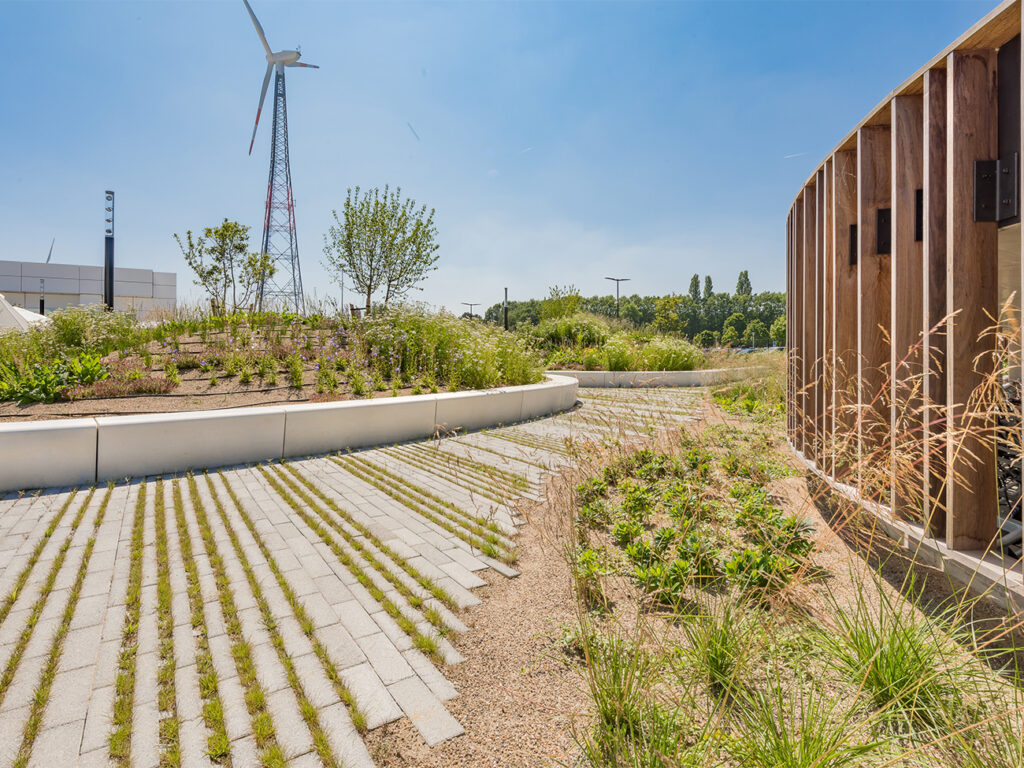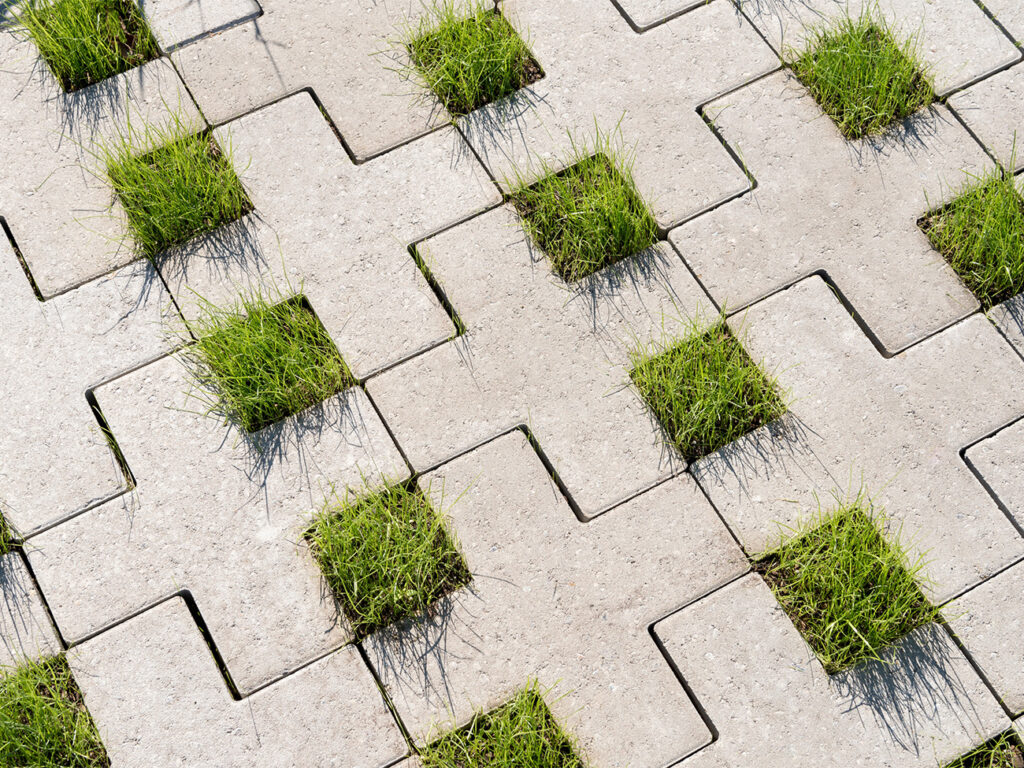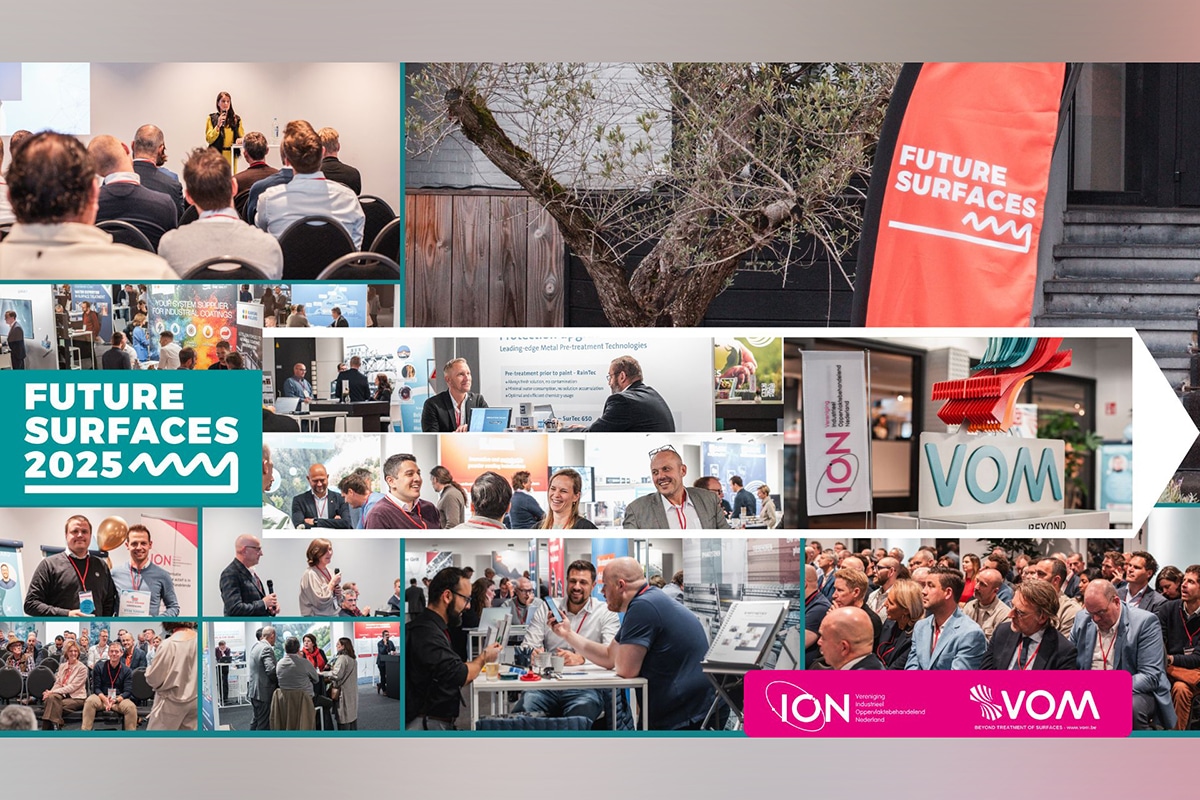
Concrete as part of the solution
Concrete is strongly shaking off the - unjustified - conventional perception. In the fight against global warming and the drive for more greenery in public spaces, (precast) concrete can play a positive role. "Concrete is not part of the problem, but part of the solution," says Sven Tilkin, project development manager at Stradus, a member of FEBESTRAL, the sub-association within FEBE that represents manufacturers of precast concrete products for the paving market.
FEBE is the recognized trade association of manufacturers of precast concrete products and defends the industry's interests. The Belgian concrete industry produces a wide range of precast elements for construction, ranging from simple, unreinforced products such as masonry blocks and paving stones to the large structural elements such as bridge girders. Within FEBE, FEBESTRAL operates as a sub-association uniting the manufacturers of precast concrete products for the paving market, such as concrete pavers, concrete tiles, linear elements and accessories. FEBESTRAL is responsible for supporting the commercialization of its members' products, both on a technical and promotional level.
Concrete as a building product has stood strong for centuries. But that does not mean the material is not subject to innovation. On the contrary. Concrete is evolving and will continue to play a crucial role in the construction industry. "It is one of the oldest building materials we know and above all a particularly solid material," said Sven Tilkin of Stradus, a specialist in precast concrete products for creating pleasant, accessible, safe and sustainable public spaces. "In creating climate-proof public spaces, which is what the construction shift aspires to, concrete is part of the solution. Greening is certainly good and necessary, but concrete certainly has its place there as well. Moreover, certain functionalities will always be needed and then concrete is indispensable."

Design freedom
Within the concrete world, the paving industry is currently in a rapidly evolving market. After all, concrete pavers are a flexible material with many advantages. In addition to the endless possibilities in shapes, sizes and textures, characteristics such as quality, durability and functionality have determined its success. So the market is anything but idle. Sven Tilkin: "Especially in the field of permeable paving and green paving, we see a lot happening. And Belgium is playing a pioneering role in this. Initially, the products simply had to allow water to pass through, but later design also became very important. In 2015, for example, Stradus launched a new paving stone family with closed, semi-open and open variants. That way, the design can take into account what prevails in a particular place."
Aesthetics
Finding the right balance, according to Sven Tilkin, is very important: "Because we can't avoid it, the climate is increasingly pressing our noses to the facts. Even in terms of the composition of our concrete mixtures, we are therefore looking at more sustainable alternatives. For example, there are already quite a few techniques for creating concrete without cement. Stradus itself recently launched CERO paving, using cement-free geopolymer concrete with CO2 emissions up to 70 % lower than those of standard concrete products and even 35 % lower than those of products based on more sustainable cement types. This without sacrificing quality and with the familiar decorative coating. We still use cement in this decorative coating. Deliberately, because that ensures color stability. And aesthetics are important in open spaces. Moreover, it is better to produce many popular bricks with a cement-free sub-concrete than a brick that is completely cement-free, but not at all interesting for the market."

Greening
When it comes to public spaces, more and more boards and commissioners are betting on greening. "The image of greening is becoming more and more established," Sven Tilkin said. "There are often questions about the maintenance of a parking lot with permeable stones, for example. But that's not so bad. After all, a little weed on a full parking lot made of concrete pavers is much more disturbing than unwanted vegetation on a green parking lot. So perceptions in terms of maintenance are also changing. The corona pandemic has further accelerated this process. People have learned over the past year to better appreciate the importance of a beautiful public space."
Clearly, then, the ball is rolling. "Not only in terms of concrete, but the entire construction sector is making a shift. The Netherlands is further ahead than Belgium in terms of circular economy. In the Netherlands, you have the environmental cost indicator (MKI) which reflects the notional environmental price. The more sustainable, the lower the MKI value. It would be good if Belgium, where price is still very decisive in tenders, introduced something like this. As manufacturers, we obviously do our best to do our part, but at the end of the day we are only one link in the chain. That's why organizations like FEBE and FEBESTRAL are hugely important because the voice of a federation can be much louder," Sven Tilkin concludes.




